Abstract
1 Intracellular recordings were made from identified bulbar reticulo-spinal neurones in the medulla of lamprey ammocoetes. Responses to iontophoretically applied inhibitory transmitters were measured as changes in membrane potential and input resistance. 2 Dose-dependent alterations in the responses to gamma-aminobutyric acid (GABA) and glycine during bath application of injectable anaesthetic drugs were measured; the compounds used were pentobarbitone, ketamine, metomidate and the steroid mixture alphaxalone/alphadolone (Saffan). 3 GABA responses were potentiated by pentobarbitone (1-3 X 10(-4) M) and prolonged by ketamine (3.7 X 10(-5) M); but depressed by high concentrations (10(-3) M) of all drugs, as well as by anaesthetic concentrations of alphaxalone (1-3 X 10(-5) M). 4 Glycine responses were depressed by alphaxalone (1-3 X 10(-5) M) and by supra-anaesthetic concentrations of ketamine (3.7 X 10(-4) M) and metomidate (1.8 X 10(-3) M). No drug potentiated the glycine responses. 5 In the absence of an effect common to the 4 anaesthetics, it is concluded that neither potentiation nor inhibition of all GABA or glycine responses is an essential feature of anaesthesia. However, effects comparable to those described here may contribute to the overall clinical picture during anaesthesia of higher vertebrates. The findings do not support the notion that all anaesthetic agents act on biological membranes by a single mechanism.
Full text
PDF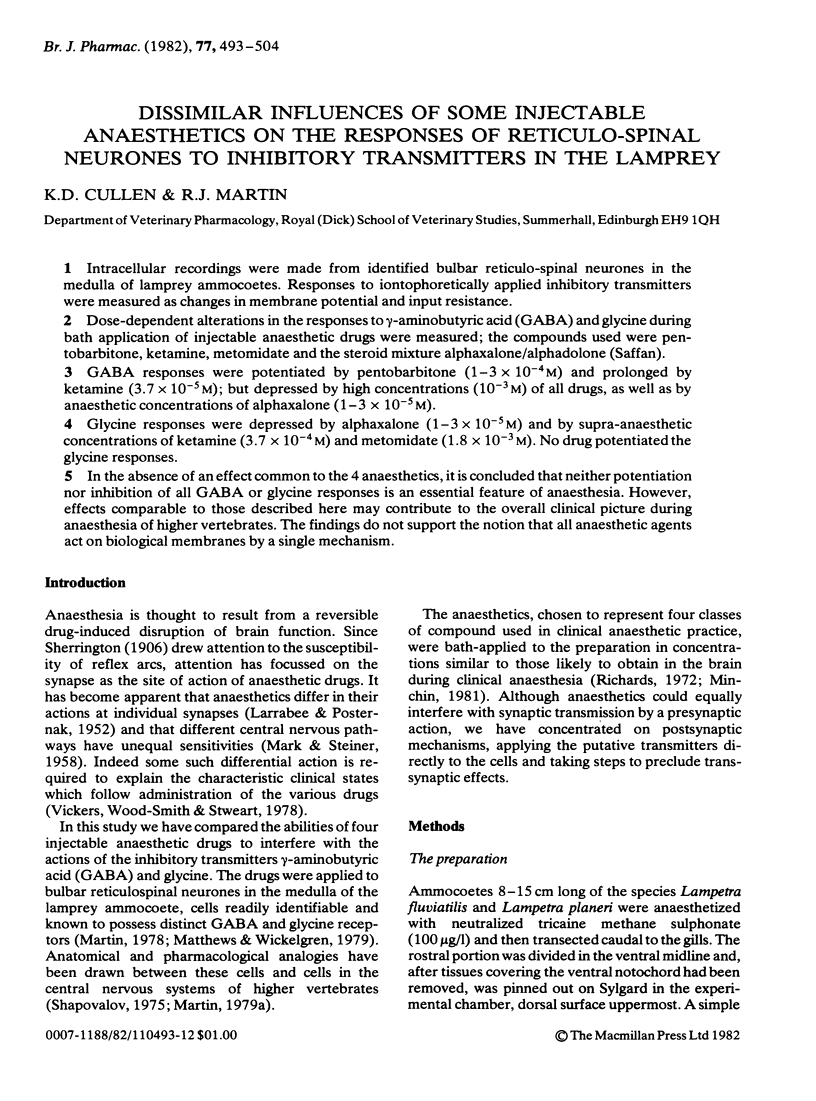
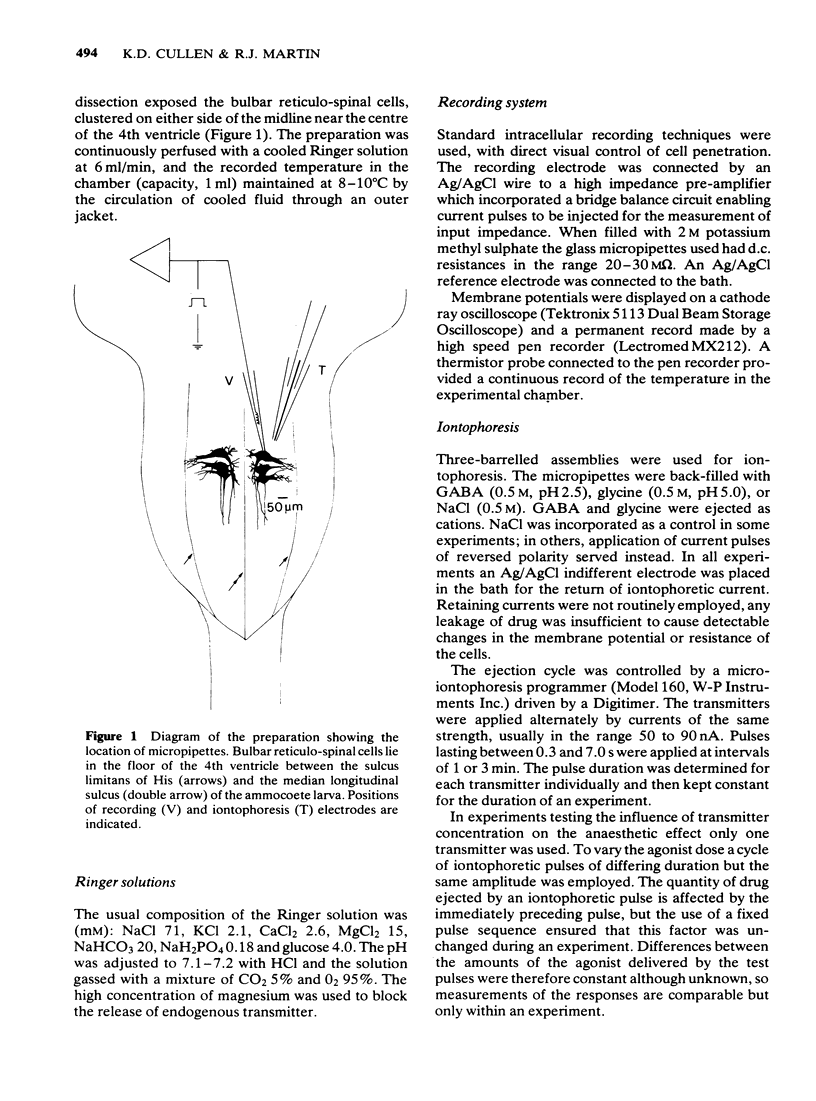
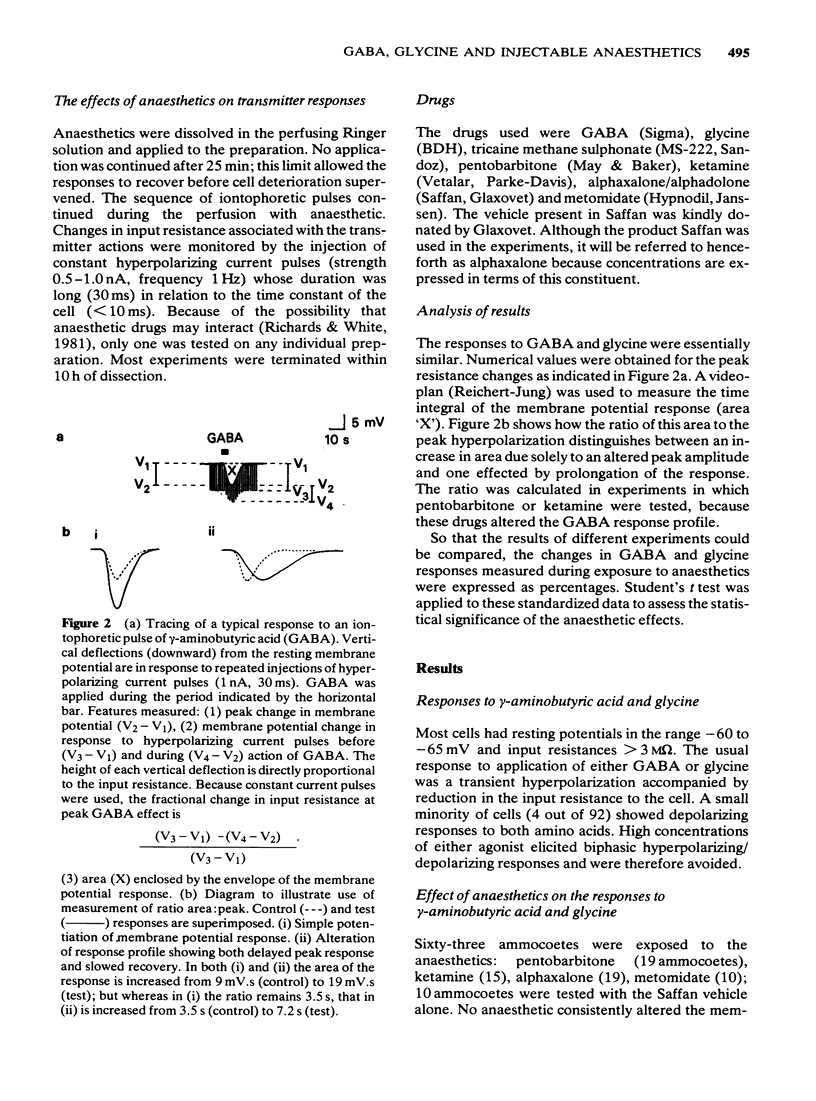
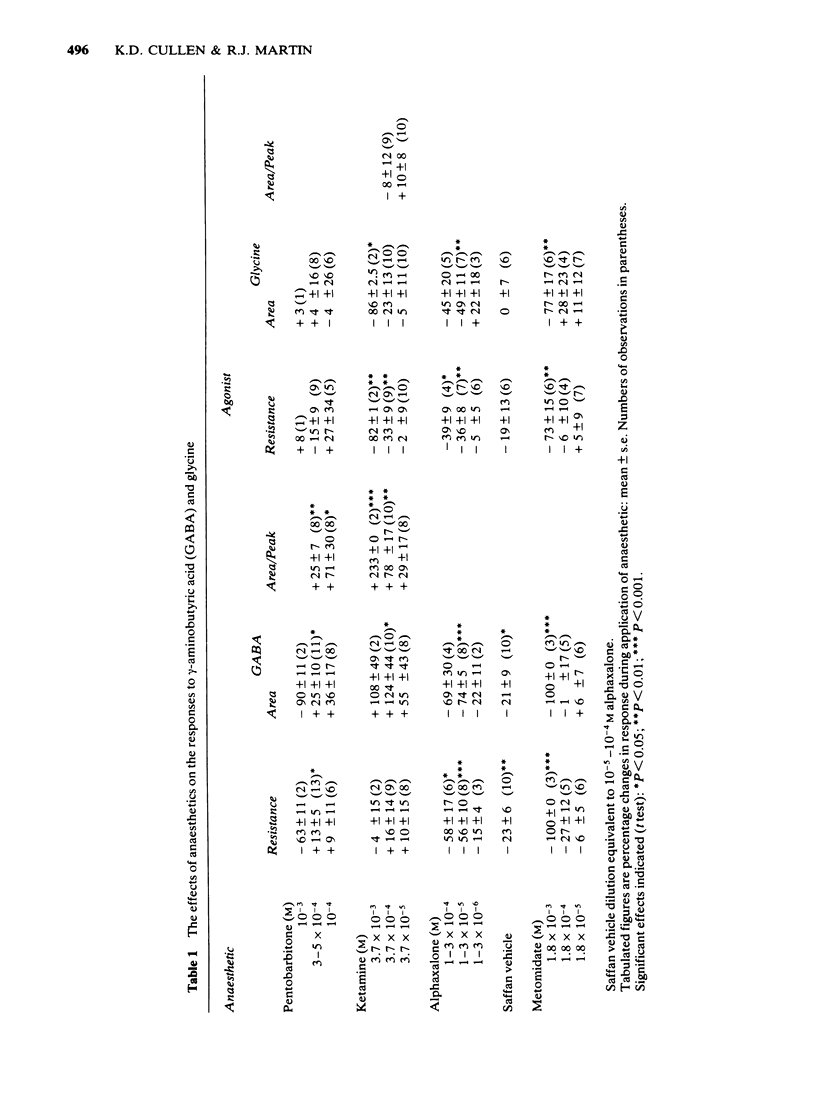
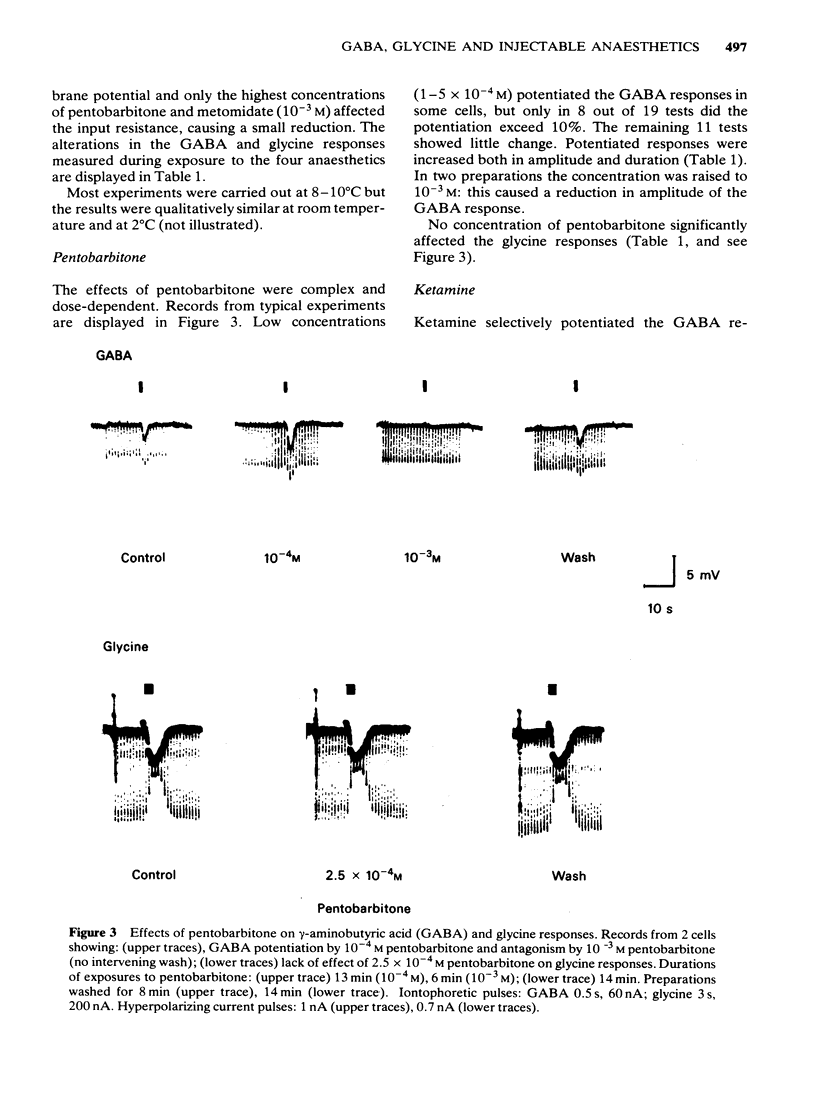
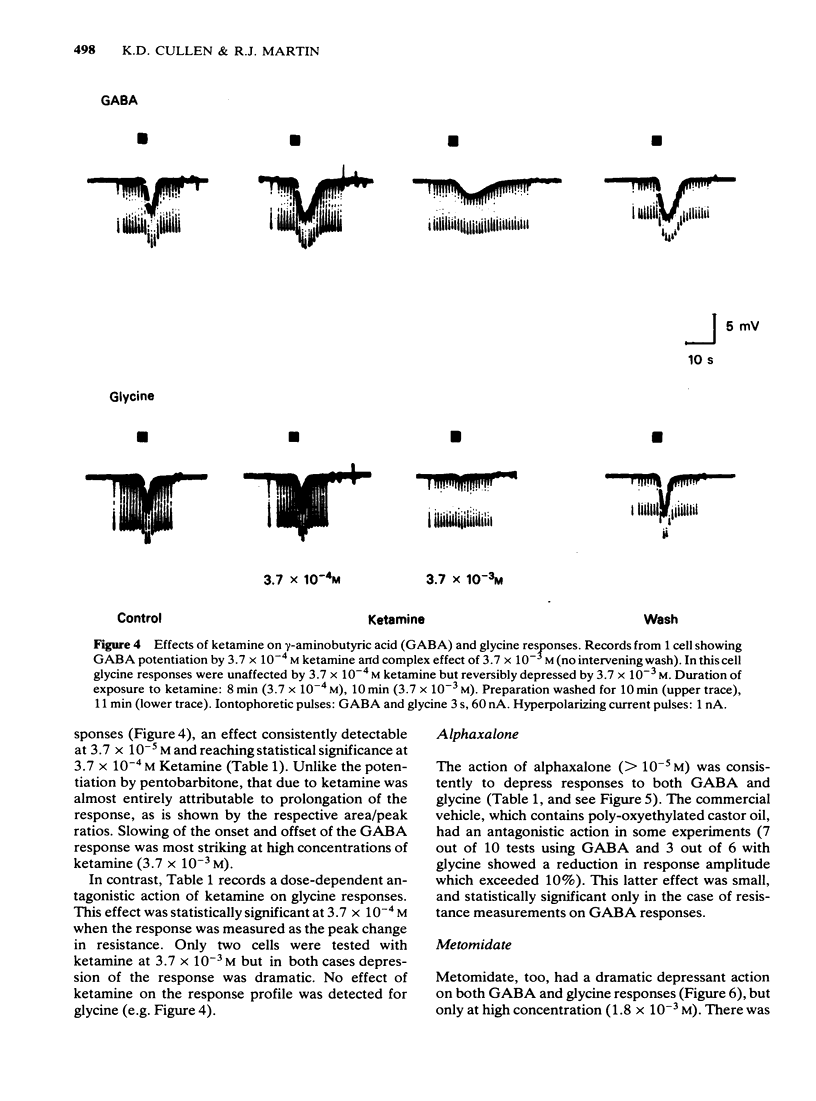
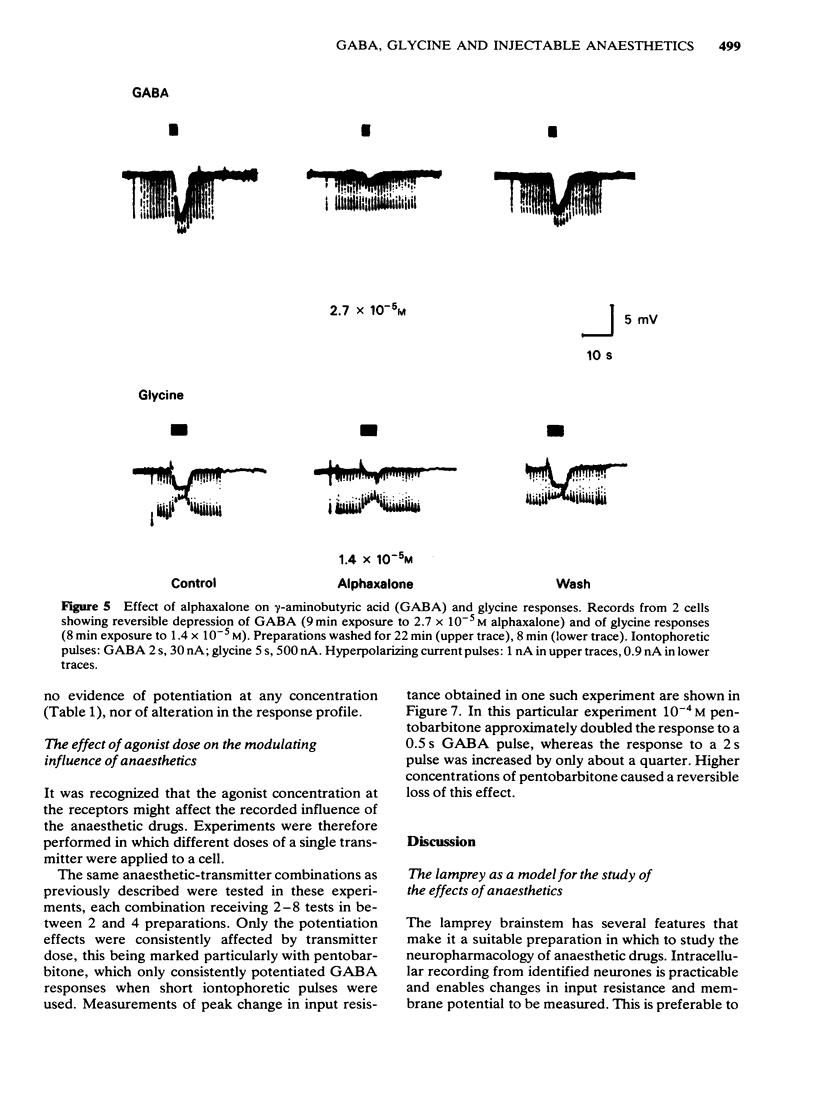
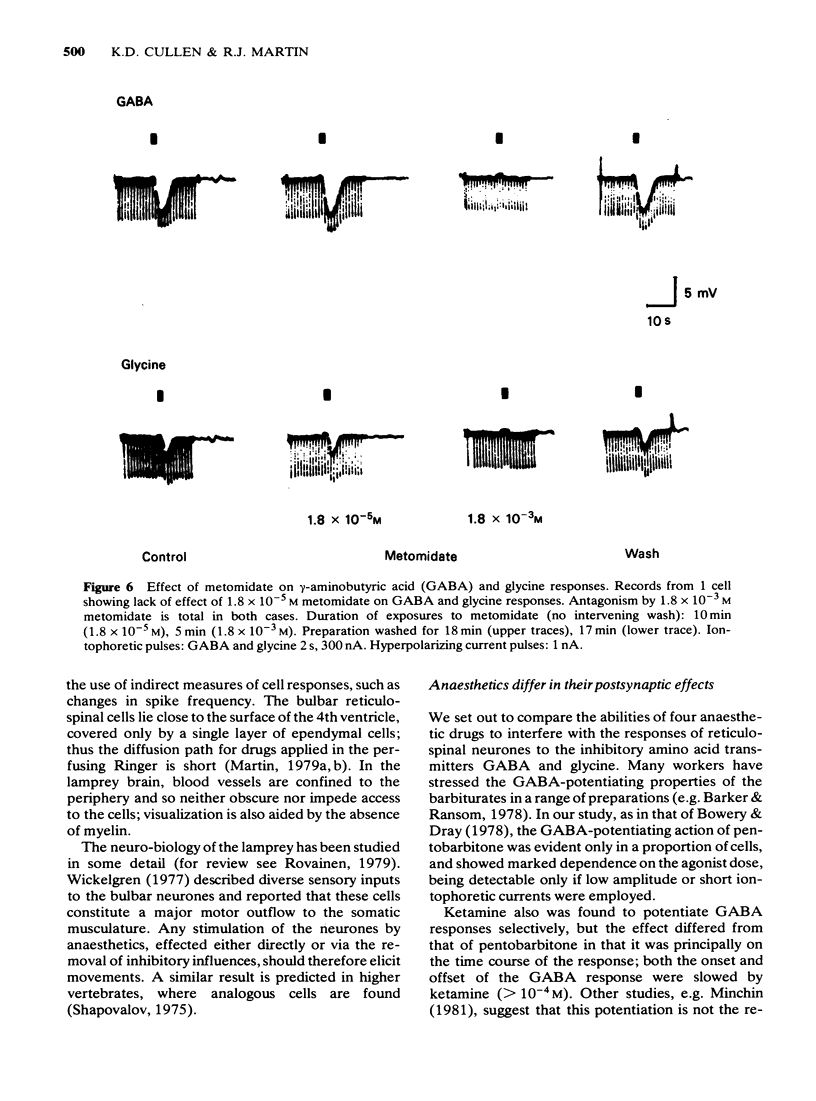
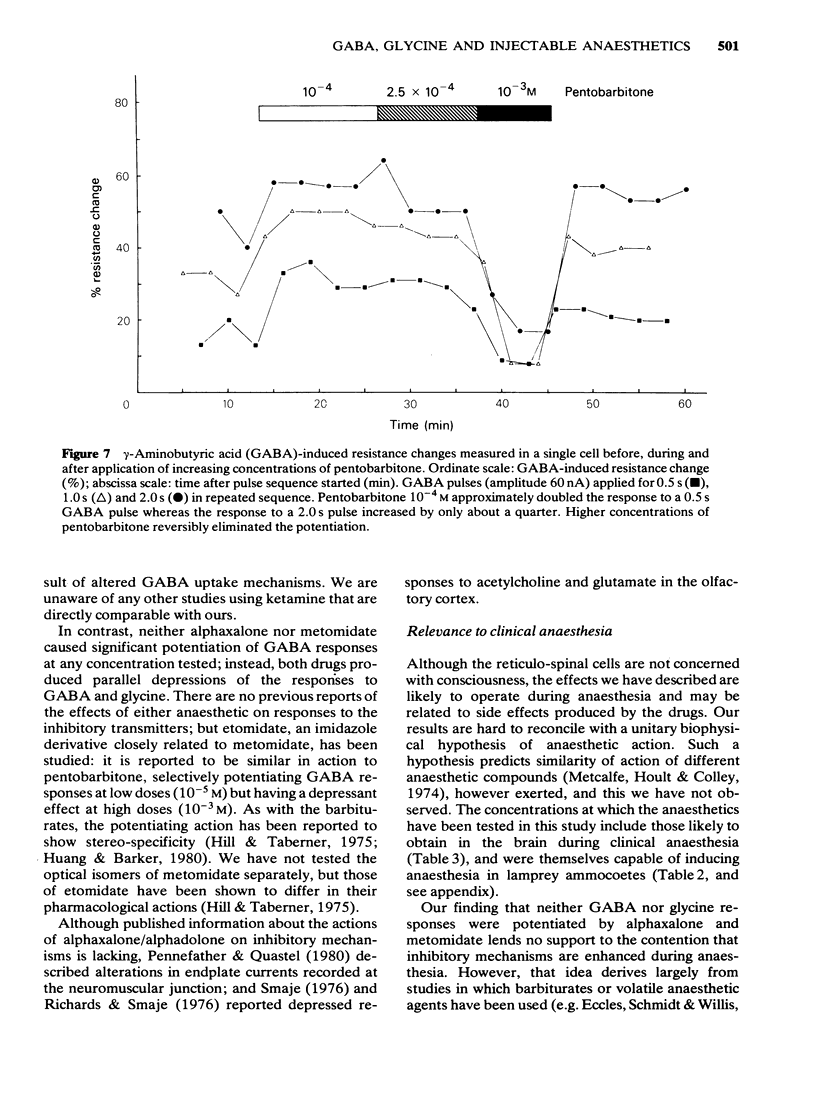
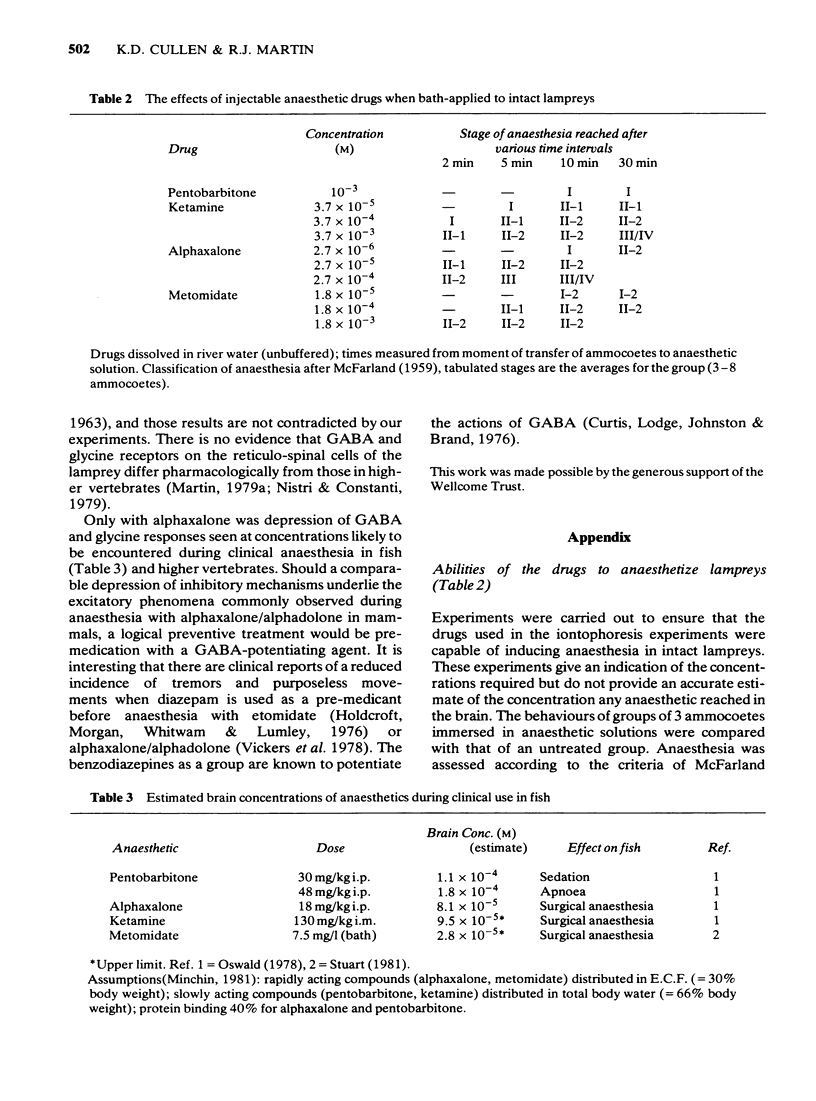
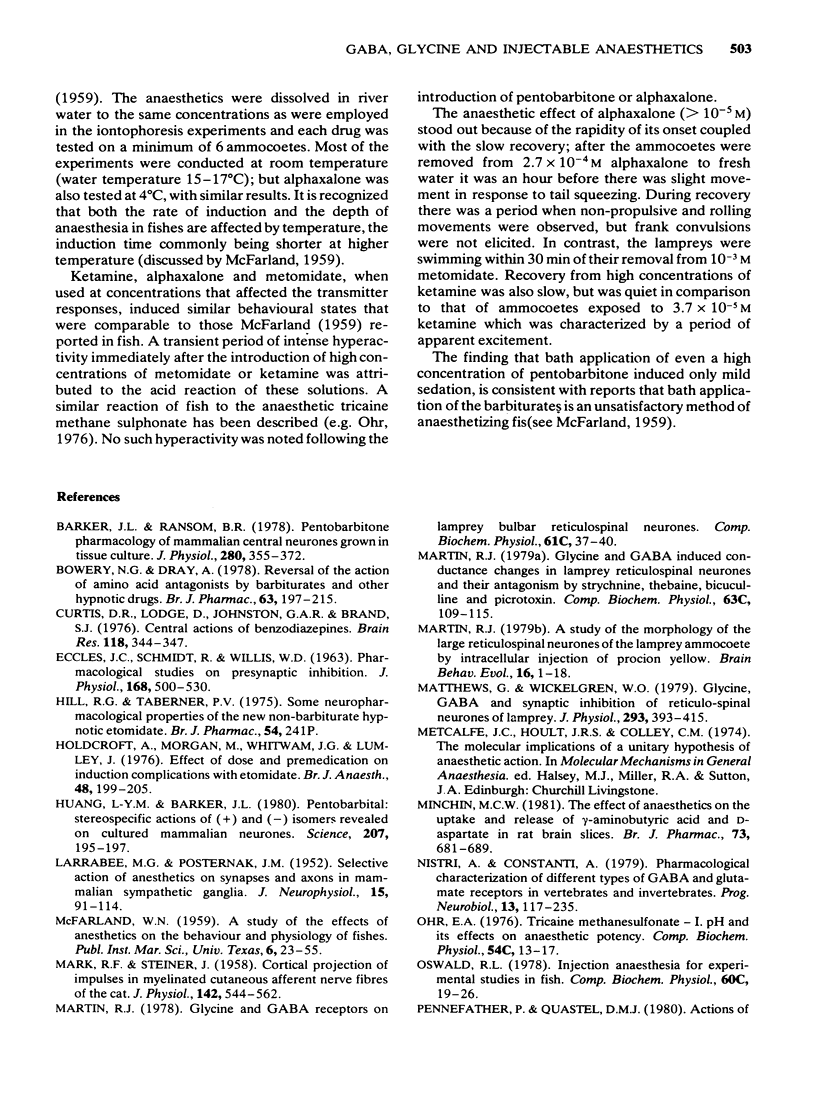
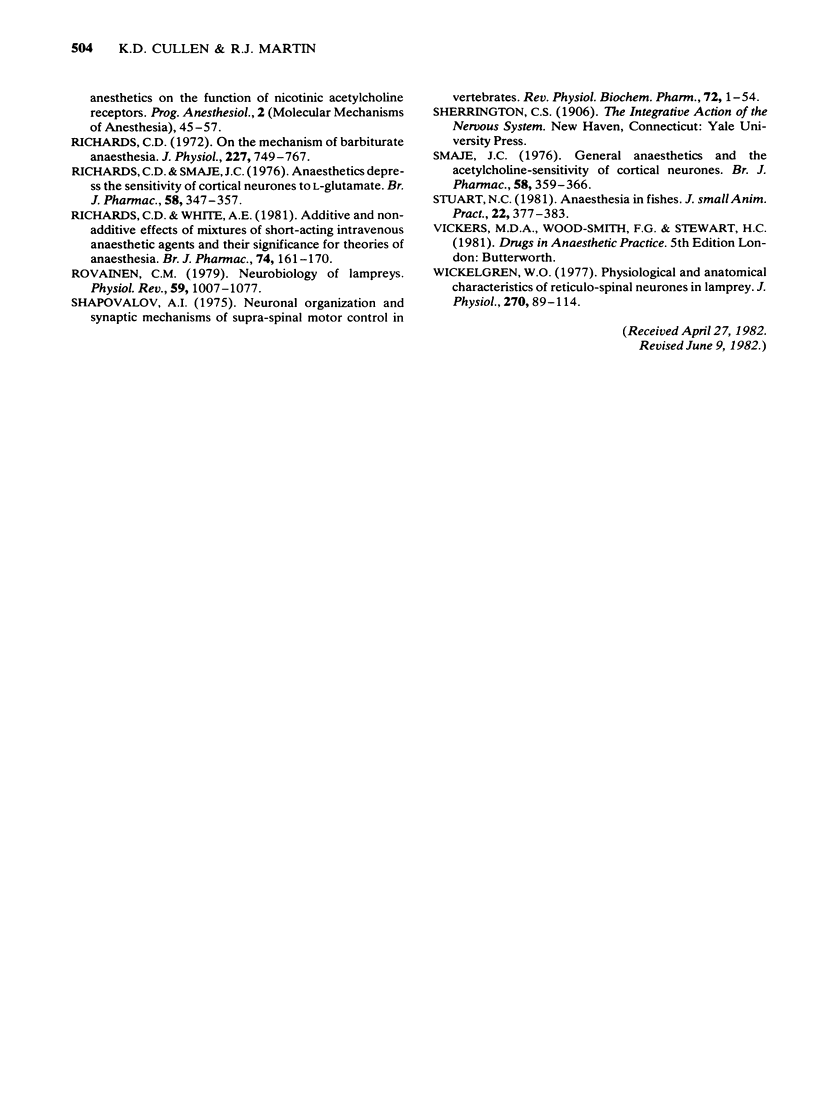
Selected References
These references are in PubMed. This may not be the complete list of references from this article.
- Barker J. L., Ransom B. R. Pentobarbitone pharmacology of mammalian central neurones grown in tissue culture. J Physiol. 1978 Jul;280:355–372. doi: 10.1113/jphysiol.1978.sp012388. [DOI] [PMC free article] [PubMed] [Google Scholar]
- Bowery N. G., Dray A. Reversal of the action of amino acid antagonists by barbiturates and other hypnotic drugs. Br J Pharmacol. 1978 May;63(1):197–215. doi: 10.1111/j.1476-5381.1978.tb07790.x. [DOI] [PMC free article] [PubMed] [Google Scholar]
- Curtis D. R., Lodge D., Johnston G. A., Brand S. J. Central actions of benzodiazepines. Brain Res. 1976 Dec 17;118(2):344–347. doi: 10.1016/0006-8993(76)90723-x. [DOI] [PubMed] [Google Scholar]
- ECCLES J. C., SCHMIDT R., WILLIS W. D. PHARMACOLOGICAL STUDIES ON PRESYNAPTIC INHIBITION. J Physiol. 1963 Oct;168:500–530. doi: 10.1113/jphysiol.1963.sp007205. [DOI] [PMC free article] [PubMed] [Google Scholar]
- Hill R. G., Taberner P. V. Proceedings: Some neuropharmacological properties of the new non-barbiturate hypnotic etomidate (R (+)-ethyl-1-(alpha-methyl-benzyl) imidazole-5-carboxylate). Br J Pharmacol. 1975 Jun;54(2):241P–241P. [PMC free article] [PubMed] [Google Scholar]
- Holdcroft A., Morgan M., Whitwam J. G., Lumley J. Effect of dose and premedication on induction complications with etomidate. Br J Anaesth. 1976 Mar;48(3):199–205. doi: 10.1093/bja/48.3.199. [DOI] [PubMed] [Google Scholar]
- Huang L. Y., Barker J. L. Pentobarbital: stereospecific actions of (+) and (-) isomers revealed on cultured mammalian neurons. Science. 1980 Jan 11;207(4427):195–197. doi: 10.1126/science.7350656. [DOI] [PubMed] [Google Scholar]
- LARRABEE M. G., POSTERNAK J. M. Selective action of anesthetics on synapses and axons in mammalian sympathetic ganglia. J Neurophysiol. 1952 Mar;15(2):91–114. doi: 10.1152/jn.1952.15.2.91. [DOI] [PubMed] [Google Scholar]
- MARK R. F., STEINER J. Cortical projection of impulses in myelinated cutaneous afferent nerve fibres of the cat. J Physiol. 1958 Aug 6;142(3):544–562. doi: 10.1113/jphysiol.1958.sp006035. [DOI] [PMC free article] [PubMed] [Google Scholar]
- Martin R. J. A study of the morphology of the large reticulospinal neurons of the lamprey ammocoete by intracellular injection of Procion yellow. Brain Behav Evol. 1979;16(1):1–18. doi: 10.1159/000121820. [DOI] [PubMed] [Google Scholar]
- Martin R. J. Glycine and GABA receptors on lamprey bulbar reticulospinal neurones. Comp Biochem Physiol C. 1978;61C(1):37–40. doi: 10.1016/0306-4492(78)90108-9. [DOI] [PubMed] [Google Scholar]
- Matthews G., Wickelgren W. O. Glycine, GABA and synaptic inhibition of reticulospinal neurones of lamprey. J Physiol. 1979 Aug;293:393–415. doi: 10.1113/jphysiol.1979.sp012896. [DOI] [PMC free article] [PubMed] [Google Scholar]
- Minchin M. C. The effect of anaesthetics on the uptake and release of gamma-aminobutyrate and D-aspartate in rat brain slices. Br J Pharmacol. 1981 Jul;73(3):681–689. doi: 10.1111/j.1476-5381.1981.tb16803.x. [DOI] [PMC free article] [PubMed] [Google Scholar]
- Nistri A., Constanti A. Pharmacological characterization of different types of GABA and glutamate receptors in vertebrates and invertebrates. Prog Neurobiol. 1979;13(2):117–235. doi: 10.1016/0301-0082(79)90016-9. [DOI] [PubMed] [Google Scholar]
- Ohr E. A. Tricaine methanesulfonate--1. pH and its effects on anesthetic potency. Comp Biochem Physiol C. 1976;54(1):13–17. doi: 10.1016/0306-4492(76)90018-6. [DOI] [PubMed] [Google Scholar]
- Oswald R. L. Injection anaesthesia for experimental studies in fish. Comp Biochem Physiol C. 1978;60(1):19–26. doi: 10.1016/0306-4492(78)90021-7. [DOI] [PubMed] [Google Scholar]
- Richards C. D. On the mechanism of barbiturate anaesthesia. J Physiol. 1972 Dec;227(3):749–767. doi: 10.1113/jphysiol.1972.sp010057. [DOI] [PMC free article] [PubMed] [Google Scholar]
- Richards C. D., Smaje J. C. Anaesthetics depress the sensitivity of cortical neurones to L-glutamate. Br J Pharmacol. 1976 Nov;58(3):347–357. [PMC free article] [PubMed] [Google Scholar]
- Richards C. D., White A. E. Additive and non-additive effects of mixtures of short-acting intravenous anaesthetic agents and their significance for theories of anaesthesia. Br J Pharmacol. 1981 Sep;74(1):161–170. doi: 10.1111/j.1476-5381.1981.tb09969.x. [DOI] [PMC free article] [PubMed] [Google Scholar]
- Rovainen C. M. Neurobiology of lampreys. Physiol Rev. 1979 Oct;59(4):1007–1077. doi: 10.1152/physrev.1979.59.4.1007. [DOI] [PubMed] [Google Scholar]
- Shapovalov A. I. Neuronal organization and synaptic mechanisms of supraspinal motor control in vertebrates. Rev Physiol Biochem Pharmacol. 1975;72:1–54. doi: 10.1007/BFb0031545. [DOI] [PubMed] [Google Scholar]
- Smaje J. C. General anaesthetics and the acetylcholine-sensitivity of cortical neurons. Br J Pharmacol. 1976 Nov;58(3):359–366. doi: 10.1111/j.1476-5381.1976.tb07712.x. [DOI] [PMC free article] [PubMed] [Google Scholar]
- Stuart N. C. Anaesthetics in fishes. J Small Anim Pract. 1981 Jun;22(6):377–383. doi: 10.1111/j.1748-5827.1981.tb00621.x. [DOI] [PubMed] [Google Scholar]
- Wickelgren W. O. Physiological and anatomical characteristics of reticulospinalneurones in lamprey. J Physiol. 1977 Aug;270(1):89–114. doi: 10.1113/jphysiol.1977.sp011940. [DOI] [PMC free article] [PubMed] [Google Scholar]


